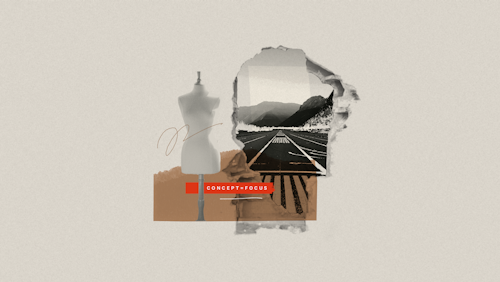
B2B brands that execute on brand correctly are primed to win, but it will take some healthy self-awareness and courage.
The undisputable influence of branding is felt in every market by every business. For winning organizations, brand is chapter one of their playbook. Brand leaders such as Disney, Nike, and Apple have understood this for decades. As the next wave of innovation and business creation takes shape, organizations that get brand right are likely to move to the front of the line.
For this reason, the business-to-business (B2B) sector has a unique opportunity to capitalize. My brand agency works with B2B companies, and while I believe B2B will lead innovation, it also has the most room to improve in how it delivers on brand. B2B brands that execute on brand correctly are primed to win, but it will take some healthy self-awareness and courage.
Fortune favors the bold and the emotionally connected.
One large misconception still persists: B2B brands should never emote or take a stance that feels overly human. Business should be businessy, right?
Surprisingly, many people still believe that B2B is purely pragmatic compared to business-to-consumer (B2C); and for that reason, it should approach branding differently. This is simply not true.
According to a study by CEB Marketing, in partnership with Google and Motista, “B2B customers are significantly more emotionally connected to their vendors and service providers than consumers.” It went on to show that seven out of nine B2B brands that were studied had emotional connections with more than 50% of their customers. I can only imagine how much further we’ve progressed considering this study is from 2013.
In today’s world, it should no longer feel impossible to imagine a B2B business taking on the personality of Mailchimp. Intuit seems to agree; the company just acquired Mailchimp for $12 billion. Proving the point of this article well, Mailchimp holds no punches when it comes to brand. In my opinion, its authenticity is infectious and leaves zero confusion on who Mailchimp is, what it cares about, and who it wants to serve—and it isn’t required to wear a tie and use business jargon to impress its customer base.
This is where self-awareness and courage come into play. With an inherently different “feel,” Mailchimp proudly stands as a refreshing juxtaposition to the old guard of B2B, and I would venture that part of that $12 billion paid by Intuit is for that specifically.
Focusing on your why, not your what.
So where do courage and self-awareness show up? A powerful first step for B2B businesses is to stop focusing on their “what,” such as features and tooling, and start leading with their “why”—which is to say why they even get out of bed in the morning. The why answers a larger calling, making the brand more sticky and only then revealing the features, which is how the brand fulfills the mission on the day-to-day.
With hundreds of B2B rebranding efforts under our belt, we continuously see this common trap of what before why. This is where courage shows up. When a B2B business (or any business, for that matter) chooses to start with features instead of purpose, it misses a critical step in the brand trust-building process. The process wherein a customer builds a relationship first and makes a decision second. A simple shift with a big return.
Any business that understands its why, its truly authentic self and resulting story, is able to speak in a more connected way. This allows the business to reach its customer on a more emotional level. This is where leading businesses pull away from the competition: allowing their authenticity and relatability to rise to the top, while shedding business jargon as the primary soul of the business. More than any other reason, a Tesla customer buys a Tesla because they believe in the sustainability of our planet and want to support that mission. They are buying the why, not the what.
The change has begun.
Thankfully, this B2B transition is well underway. Brands like Square and Salesforce, as well as some of our past clients like Shopify, Braze, Twilio, and Adobe, are leading the way forward. The old thesis that B2B brands need to feel stale and nondescript to come across as safe and trusted is dying fast.
The latest FutureBrand Index of the top 100 shocked many when it revealed B2B brands represented four of the top five brands in 2021. Only Apple remained as the single consumer brand in the top five, and it’s no surprise why. Apple is the master at making a highly precise and technically minded company feel like an approachable, trusted companion. B2B can absolutely do the same.

